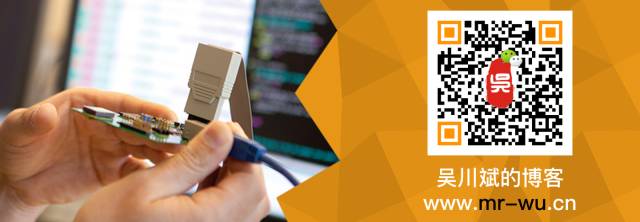Today, someone sent a picture to Lao Wu, asking about the several white translucent substances on the fixed seat of the PCB shown in the image. He didn’t know what they were or why they appeared on the PCB.
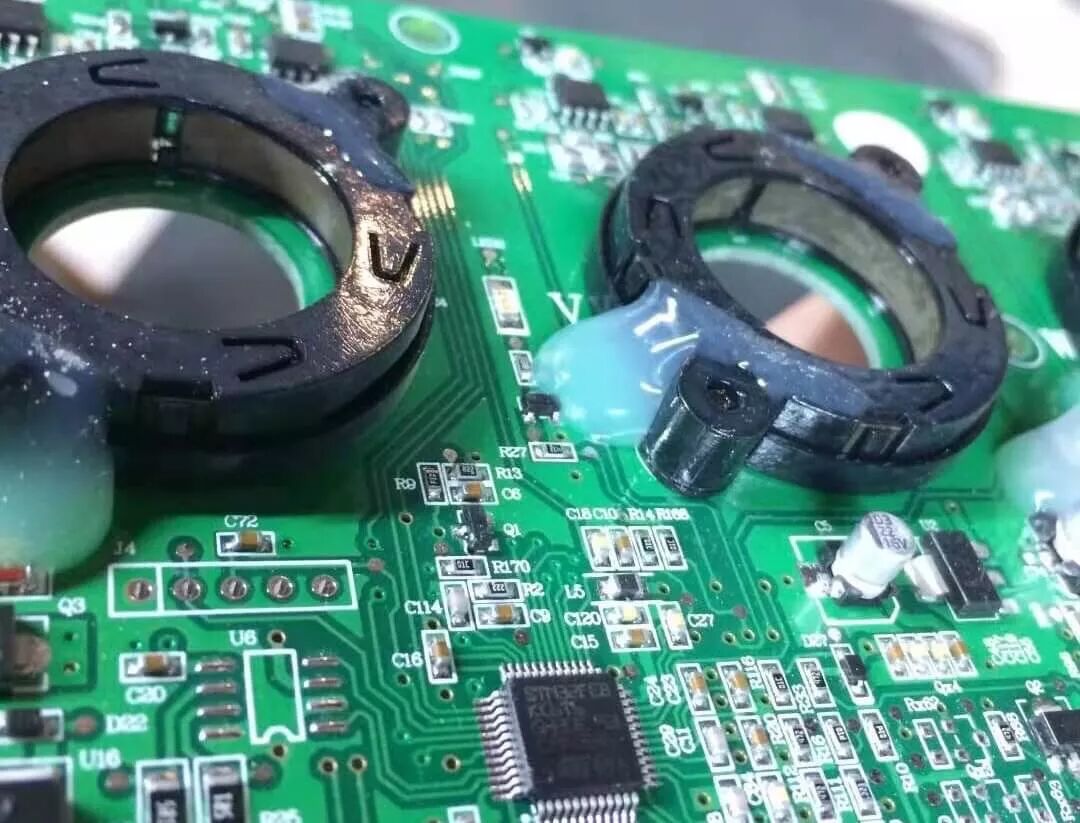
I looked at the picture and thought it should be hot melt adhesive used for fixing the base. Of course, just based on the appearance, the viscous milky gel used on PCBs could also be silicone, but considering that the application area is the camera base, which does not require high-temperature resistance or excellent tensile strength, and that hot melt adhesive can solidify quickly after application, it is likely that hot melt adhesive is chosen for fixing the camera.
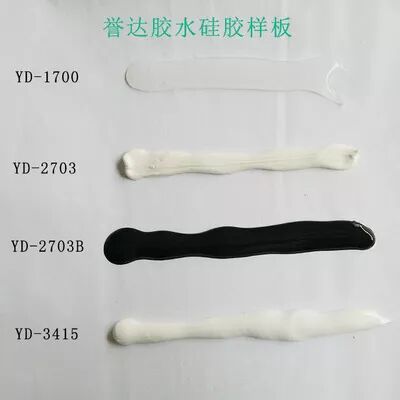
Hot melt adhesive is a thermoplastic adhesive that is solid at room temperature but liquefies at higher temperatures. The molten liquid adheres to the substrate, and when the adhesive layer cools and hardens, it forms a bond. The representative melting temperature is between 65°C and 180°C. Since it contains no solvents and is 100% solid, it complies with the strictest air pollution control regulations and poses almost no risk of fire or explosion.
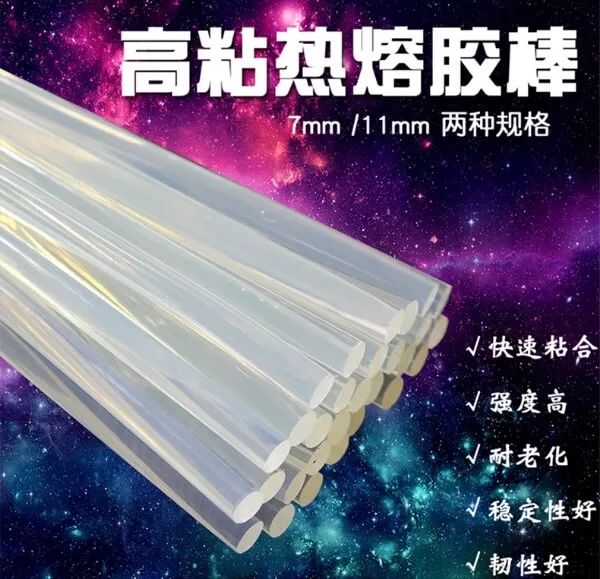
Compared to silicone, hot melt adhesive has the advantage of rapid curing. It also has good flame retardancy, typically certified by FDA and UL94, with a maximum rating of 94V0; it is a non-structural adhesive that is removable and repairable, curing upon cooling, and quickly achieving initial adhesion strength, making it suitable for fixing electronic components and cable harnesses.
Hot melt adhesive has a wide range of applications, with the packaging industry accounting for over 50% of the hot melt adhesive market. These packaging materials include folded cardboard boxes, corrugated boxes, composite material cans, tapes, and other laminated coating materials. Textile applications include sanitary napkins, diapers, garment bonding, and seam joining. Woven products include garments, edge seams, tapes, carpets. Office supplies include tapes, folders, self-adhesive labels, envelopes, and file folders. Component assembly includes soft drinks, electronics, book packaging, furniture, shoes, crafts, and woodworking.
Due to the extensive application range of hot melt adhesive and its pollution-free, non-harmful characteristics, it has a significant advantage in replacing solvent-based adhesives. However, due to its inherent limitations, special attention should be paid to its application. Here are a few points to note.
1. Viscosity The melting viscosity is an important indicator of workability, as hot melt adhesive must be applied using a heater, i.e., a coating machine. Generally speaking, different industries and applications have different properties, different coating machines, and coating methods, which determine the melting viscosity. It should be noted that even for the same application, the viscosity of hot melt adhesive may vary due to different manufacturers’ coating machines and methods.
2. Curing time and open time The use of hot melt adhesive relies on heat as a medium; once the gel cools, the bonding is completed. Therefore, attention must be paid to controlling the operation time. · Curing time (setting time): the best short time after application to form a bond. · Open time: the maximum time allowed from application to pressing.
3. Temperature resistance EVA-based hot melt adhesives have temperature resistance limited by their properties, typically between 40°C and 65°C under constant temperature conditions, as the melting point of general EVA is also between 40°C and 70°C. TPR has better heat resistance but often requires the addition of plasticizers, which reduces its heat resistance.
4. Adhesion When discussing adhesion, the main focus is on the material to be bonded, which can generally be classified into metals, plastics, paper, wood, etc. Choosing the appropriate model and product according to the required bonding conditions can avoid problems later and save service time.
Of course, there are many types of adhesives seen on PCBs. Here are a few common examples.
Red Glue
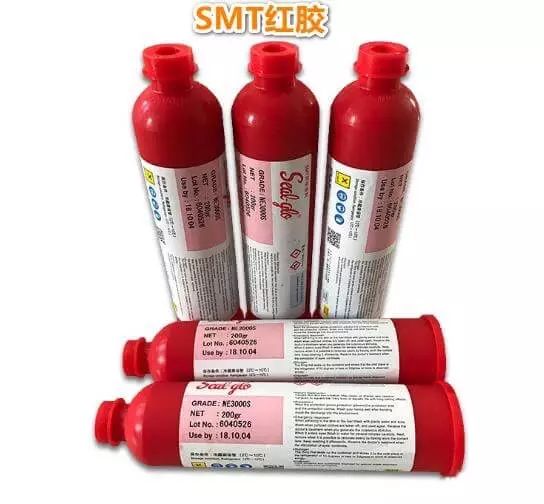
Red glue is a polyolefin compound that easily cures when heated. When the temperature reaches 150°C, the red glue begins to change from a paste to a solid. Utilizing this property, it can be applied by dot dispensing or printing to fix surface-mounted components. Components on the circuit board can be cured using an oven or reflow soldering. For double-sided mounted circuit boards, using red glue during wave soldering can prevent small surface-mounted components on the back from falling into the solder pot.
Red glue has several key features:
-
It can achieve stable adhesion strength for various chip components;
-
It has a viscosity and thixotropy suitable for screen printing requirements, with stable application amounts that do not leak or overflow;
-
It has excellent storage stability;
-
It has high adhesion strength, preventing component misalignment during high-speed placement.
The main function of red glue is to fix surface-mounted components on the circuit board, primarily serving as an adhesive or used together with solder paste for reinforcement.
Yellow Glue
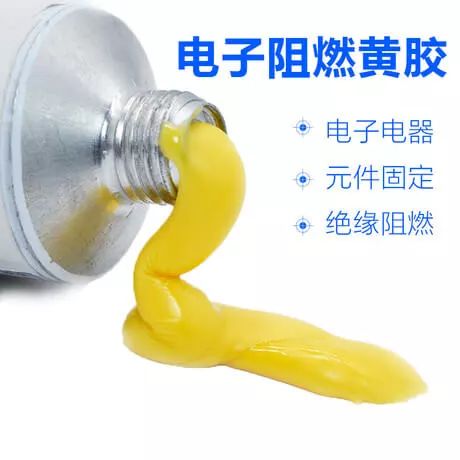
The yellow glue used on circuit boards is a water-based adhesive with a pungent odor. It is a soft, self-adhesive gel with excellent insulation, moisture resistance, shock resistance, and thermal conductivity, ensuring electronic components operate safely under harsh conditions.
It cures easily, with the curing speed dependent on environmental temperature, humidity, and wind speed: the higher the temperature, the lower the humidity, and the greater the wind speed, the faster the curing speed, and vice versa. Coated parts left in the air may develop a skin, so operations should be completed before skin formation.
Main functions: fixing electronic products such as inductors, coils, transformers, electrolytic capacitors, and receivers, providing protective sealing for electronic components, and can be used for potting electrical components, potting high-voltage parts, and moisture-proof coating of circuit boards.
Thermal Conductive Silicone
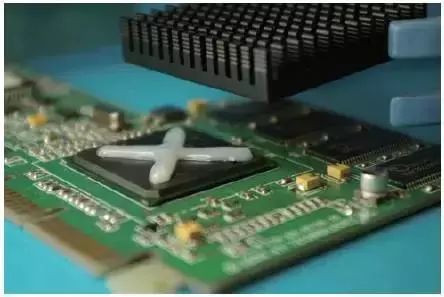
Thermal conductive silicone, also known as thermal paste or thermal grease, is a high thermal conductivity insulating organic silicone material that remains in a paste state at temperatures ranging from -50°C to +250°C. It possesses excellent electrical insulation and thermal conductivity, with low oil bleed (approaching zero), and is resistant to high and low temperatures, water, ozone, and weather aging. Its characteristics include being non-toxic, odorless, and non-corrosive, complying with ROHS standards and related environmental requirements, and having stable chemical and physical properties.
Main functions: filling gaps between heat-generating components and heat dissipation devices, increasing their contact area to achieve thermal conductivity, effectively dissipating heat generated during the operation of electronic components.
Widely applied to contact surfaces between heat-generating components (power transistors, thyristors, electric heating stacks, etc.) and heat dissipation facilities (heat sinks, heat strips, housings, etc.) in various electronic products and electrical devices, serving as a thermal transfer medium to improve heat dissipation.
Silicone Adhesive (Glass Adhesive)
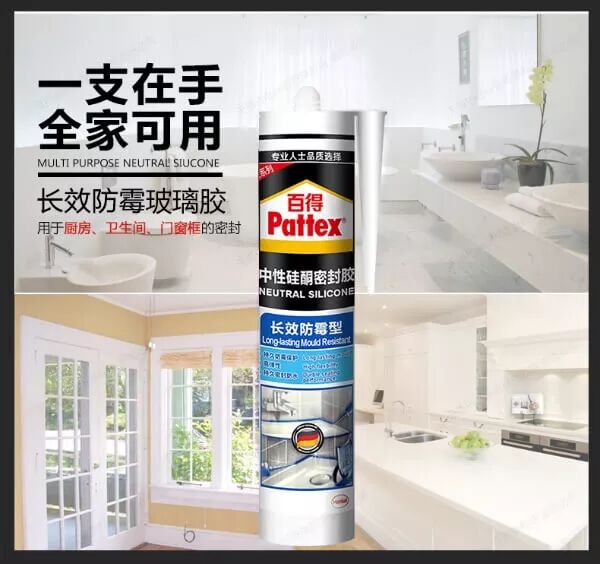
Silicone adhesive is a paste-like material that cures into a tough rubber-like solid upon contact with moisture in the air. Commonly used for bonding and sealing glass, it is colloquially known as glass adhesive. The adhesive should be stored sealed, and mixed adhesive should be used up at once to avoid waste.
Main functions: widely used for potting, insulation, and flame retardancy in electronic modules, sensors, and electronic components, as well as for bonding and insulating between electronic components.
With the rapid development of technology, electronic products are becoming increasingly sophisticated, raising higher demands for materials, processes, product appearance design, structure, and functionality. Therefore, industrial adhesives, as one of the indispensable industrial materials in the product assembly process, are crucial. For example, a typical smartphone may have over 160 adhesive application points.
Industrial adhesives, as a method of connection, have the following characteristics:
Light: Unlike cumbersome mechanical connections such as riveting, threaded connections, and welding, it uses resin-type bonding, effectively reducing product weight and making designs simpler and more practical;
Micro: Industrial adhesives can achieve bonding in areas that mechanical or physical connections cannot reach, with bonding areas as small as a few square millimeters and bonding gaps at the micrometer level, perfectly achieving filling, sealing, and protection in narrow gaps;
Fast: UV adhesive can achieve efficient curing in seconds, even in one second, suitable for mass consumer electronic products while consuming relatively little energy;
Strong: The internal stress of the bonding process is small, mostly surface bonding, while industrial adhesives provide strong bonding effects through material cohesion and surface adhesion;
Diverse: Adhesives can bond metals to metals, plastics to plastics, and metals to plastics, achieving fastening, filling, encapsulating, protecting, and fixing functions;
Due to the aforementioned advantages of industrial adhesive technology, it will increasingly replace traditional processes in modern manufacturing, playing a larger role, such as in consumer electronics where small speakers and camera modules are almost entirely bonded with industrial adhesives.
The fundamental function of bonding is connection. However, in modern manufacturing, with technological advancements, people’s expectations for adhesive performance, the roles of adhesives, and the range and adaptability of adhesive applications are increasing. Below, we will outline the roles of industrial adhesives in manufacturing.
The Role of Bonding Technology in the Modern Electronics Industry
Mechanical and physical connections are the most basic functions of adhesives. This can be considered from two aspects: on one hand, it bears loads and transmits external forces; here, the main role of the adhesive is to tightly fix two components together and transmit external forces from one component to another. For example, the blade and core of an electric saw are bonded together with adhesive, transmitting the torque during operation to the blade. Similarly, the connection between the motor rotor and the shaft follows the same principle. Generally, for load-bearing adhesives, they should have extremely high bonding strength and good impact resistance, along with good adhesive processability and rapid curing characteristics.
For adhesives that serve a physical connection role, they are often used in the assembly process of different materials, especially for very small components that are difficult or impossible to assemble using other mechanical connections, hence the use of industrial adhesives. These adhesives often require good dispensing control, allowing for precise application, fast curing speed, and high reliability after bonding.
The protective function is another important role of adhesives beyond connection. With the improvement of living standards, electronic products, especially consumer electronics, are becoming increasingly indispensable in our daily lives. There are numerous components in electronic products, which are assembled in various ways on PCB or FPCB boards. As product designs become more miniaturized and lightweight, electronic components are increasingly integrated, and circuits are becoming more compact, resulting in smaller gaps between components and pin spacing. Additionally, these components are often exposed to harsh environments, such as very humid bathrooms or dusty special occasions, and people even hope to use their phones to take photos or listen to music while swimming. All these changes and demands necessitate that the entire circuit board or most components be protected from short circuits, corrosion, or failure due to external pressure in harsh environments! Adhesives play an indispensable role in this protection, such as the commonly referred to three-proof glue and corner bonding glue, as well as potting glue for smart cards. Generally, the requirements for such adhesives are fast curing speed, low corrosive ion content, high bonding strength with different materials, and strong resistance to external forces.
The multifunctionality of adhesives is an important indicator of progress in the adhesive industry, such as achieving physical connections while also providing conductive functions. This includes replacing solder with conductive adhesives and achieving grounding functions. Solder is the traditional method of connecting wires to achieve conductivity, but its drawbacks include larger solder joints that take up more space, which is limited in increasingly thin and lightweight electronic components. Additionally, soldering requires high temperatures, which cannot be tolerated by components or products that cannot withstand high temperatures. Therefore, conductive adhesives can replace solder, overcoming its shortcomings while achieving both connection and conductivity. Conductive adhesives can be categorized by their curing methods, including heat curing, room temperature curing, and even UV curing types introduced by Panacol. Even for heat curing, the curing temperature of conductive adhesives generally does not exceed 150 degrees. In recent years, low-temperature curing conductive adhesives have emerged, with heating temperatures not exceeding 80 degrees, making their applications even broader. Generally, for conductive adhesives that serve grounding functions, high bonding strength and fast curing speed are often required, as their conductive particle content is not high, making them relatively low-cost. However, the cost of conductive adhesives that need to achieve conductivity is currently a significant factor limiting their promotion. Developing conductive adhesives with low resistivity, low cost, and high bonding strength is the direction of effort for suppliers.
The continuous high integration, miniaturization, multifunctionality, and high power of electronic products have made energy consumption/heat management increasingly prominent! These highly integrated components must not only be securely mounted on the PCB but also quickly dissipate the heat generated during operation; sometimes, an additional heat sink must be mounted on the surface of the components to cool them down. In such cases, thermal conductive adhesives are the best choice. The thermal conductivity of adhesives can be understood from two different aspects: dissipating heat and absorbing heat. For example, adhesives used to bond heat sinks should quickly dissipate heat, while thermal conductive adhesives protecting NTC temperature sensors should quickly absorb heat and transfer it to the chip. This is essentially two sides of the same issue, so the biggest challenge for thermal conductive adhesives is the ongoing pursuit of high thermal conductivity and bonding strength; additionally, the thermal conductive materials added to achieve thermal conductivity can affect the adhesive application process and the rheological properties of the adhesive.
There are various failure modes for electronic products, one of which is due to significant external forces causing components to detach from the main board or pin legs to crack, leading to malfunction. For instance, FPCs may experience long-term peeling forces at the connection point with the main board due to the elasticity of the FPC, which can lead to adhesive failure in the conductive ACF. Similarly, large capacitors may crack their pin legs due to significant instantaneous impact forces during drops. Therefore, all potentially failure-prone areas must be reinforced, and the simplest and most effective method is to use adhesives for reinforcement, including FPC reinforcement, reinforcement of large electronic components like capacitors, and corner bonding of large chips. These adhesives generally require fast curing speeds, good thixotropic properties, high bonding strength, and excellent impact resistance and vibration resistance.
As industrial adhesives are increasingly used across various industries, their functions are becoming more diversified, and different industries exhibit unique demand characteristics, demonstrating special functions related to industry or product performance. These special functions pose new requirements for adhesives. For example, in the optical and optical communication industries, adhesives are required to have low shrinkage rates, good yellowing resistance, and meet certain light transmittance standards at specific wavelengths; similarly, some acoustically related products hope adhesives can provide noise reduction and optimize acoustic effects; and some industries desire UV adhesives that can withstand temperatures of 150 degrees or even 180 degrees for extended periods.
